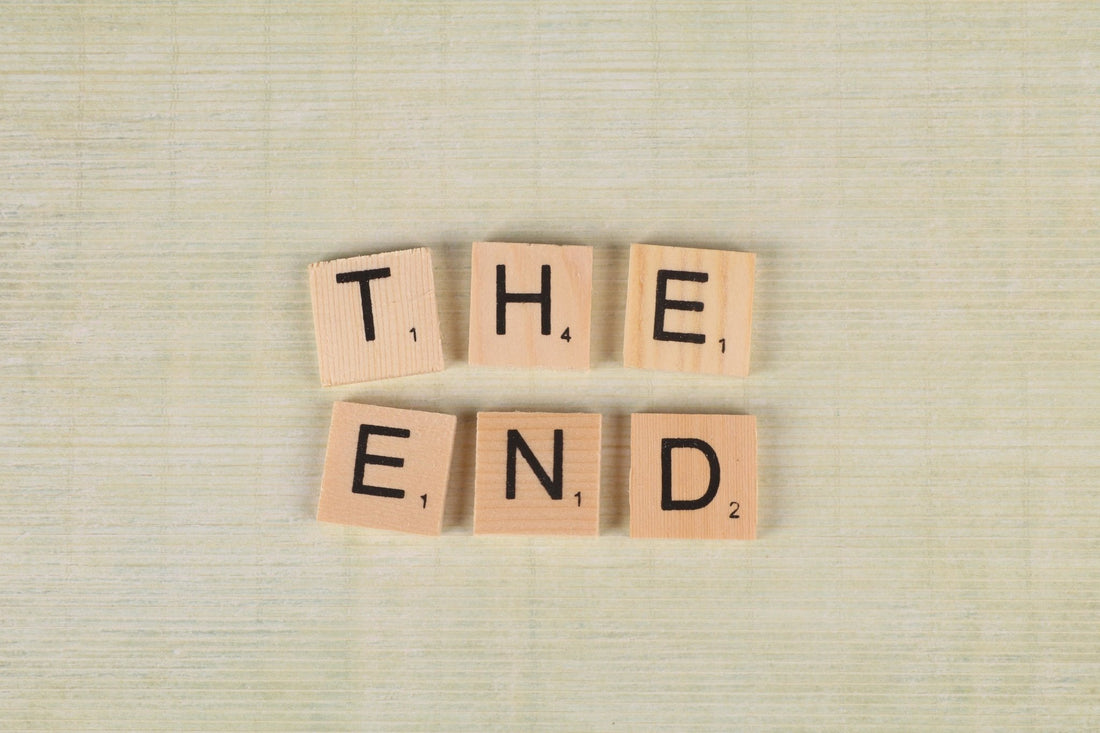
4 Types of Endings
Share
The only part of the book that’s more important than the beginning is the end. A book can have a slow start but the ending is the part of the book that will stick with a reader the most. It’s the part of the book that they’ll tell their friends about. It’s the part of the story that they’ll define the rest of the book by. How many times have you heard someone say, “Oh, I really loved that book, but I didn’t like the way it ended.” Now, an ending can’t please everyone. There will always be people that prefer a happy ending over a tragic one. Some people want the main characters to get married at the end and some people want one of them to die. A successful ending isn’t the one that pleases everyone. A successful ending is the one that fits the story and brings it to a conclusion that feels natural and earned. Let’s look at some different kinds of endings and how they might bring a story to a natural conclusion.
The Happy Ending.
You know the happy ending. The happy ending is when the main character ends up with the love interest. It’s the ending that has almost every conflict tied up in the most satisfying way for the reader and for all the characters involved. There is nothing wrong with a happy ending. In fact, I think that happy endings are rather shot down just out of some principle for a story being its most realistic form, and while sometimes people in real life get a happy ending, often times they don’t. Therefore, the happy ending is often seen as trite or childish. I reject this notion wholeheartedly because I think there’s a time and a place for happy endings, and I think they’re something the world needs. A happy ending is also sometimes what makes the most sense for the story. if you’ve written a romantic comedy where the characters are definitely moving toward falling in love and being a relationship, but then one of them dies at the end, it might be a little jarring for the reader. Not that a love interest can’t die at the end of a funny, romantic movie, that happens all the time (Fault in Our Stars anyone?), but if you decide to go that route, there has to be a good reason for it other than just shocking the audience. It has to fit the narrative, or you might end up with your reader feeling unfulfilled and confused.
The Tragic Ending.
You know this one too. Jack freezes to death, Anakin becomes Darth Vader, Thanos snaps away half the galaxy. When a tragic ending happens just for the sake of it being a tragedy, it’s obvious, at least to me. Just like a happy ending, a tragic ending has to fit a narrative and it has to be a satisfying conclusion. It doesn’t have to be the ending the reader wants, but it has to be an ending that a reader can reasonably expect. Take Titanic. The fun thing about Titanic was that it could have gone either way. Rose and Jack have worked so hard to be together and to survive the sinking of the ship, and yay! Now they both made it out alive and they get to be happy and in love forever. But also, this is a movie about a serious, tragic event in history, so it would stand to reason that in order for the story to have the most emotional and historical impact, we would have to see a character that we’re attached to die at the hands of history. Could either ending work? Sure. But the tragic ending makes more sense. A tragic ending, just like the happy ending, can be just as much unrealistic as it can be realistic if it’s not done just right.
The Hopeful Ending.
Hopeful endings are can be tough. They’re the kind of ending where it was sort of a happy ending but maybe not every loose thread was tied up in a pretty bow. While open endings are often unsatisfying, they are often the most realistic as life rarely ends when the credits roll, and life rarely has one happy or tragic ending as opposed to many. Maybe the main character doesn’t get the girl but he does get a different girl who you’re pretty sure is going to be just as awesome as the first girl (500 Days of Summer). Maybe the main character’s tragic backstory finally comes out, and it’s something that tears them apart inside, but once they’re made to face it, they can heal even if we don’t get to see that healing on screen (The Perks of Being Wallflower). A hopeful ending should leave your audience feeling a little sad but also feeling like the character is going to be able to move forward and do well after the story ends because it’s not really the end.
The Open Ending.
Oh man. Open endings can be rough too. Remember Inception, when the top is still spinning when the credits start to roll and we’re never really positive what happens? An open ending can be hard to pull off, and just like all the other endings, it should make sense with the story. Every ending has to have a purpose, and an open ending is no different. There has to be a reason why the ending needs to be ambiguous or nonexistent. You can’t just decide to withhold information from your reader just because you love to torture people. There needs to be a reason that the final decision should be the audience’s and why that’s the way the story has to be told. Open endings hold endless potential, just like life, and should be used in a situation where it feels like the story might never really end.